My progress as of v0.52
Mostly for my own sake, I'd like to take a look back on how the progress on this game has gone in the form of work-in-progress screenshots and some discussion on how my thinking has evolved when working on this project. I also want anyone reading this to realize:
- It is possible to make a complete game with free programs
- As of right now, everything you see in Courier Dash is made using free software/online services:
- Godot (game engine)
- Blender (3D art)
- Online Sequencer (music)
- jsfxr (sounds)
- Photopea (2D art)
- Keep in mind when reading this post that I have spent absolutely no money whatsoever on this project. I actually make a point out of making this game with completely free software, to show that it can be done. I work solo so not every aspect of the game will be stellar (I struggle with 2D art especially), but if you have a small team with more specialized roles you can get VERY far without spending anything at all!
- As of right now, everything you see in Courier Dash is made using free software/online services:
Humble Beginnings
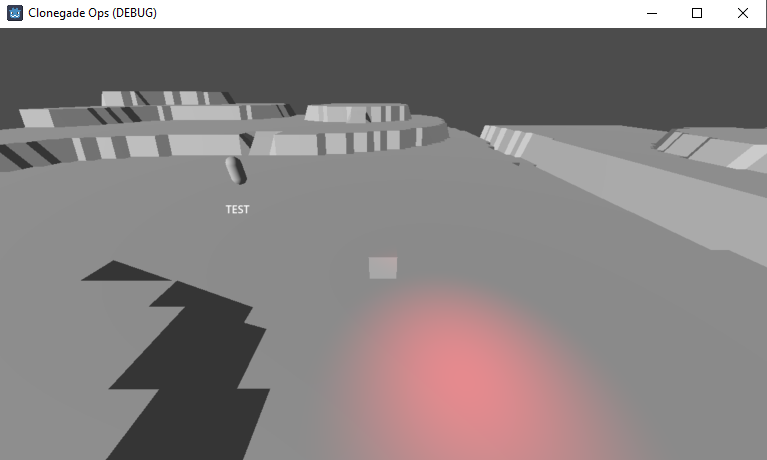
This is the very first screenshot of Courier Dash (then nicknamed Clonegade Ops; the biggest inspiration for doing this project is a game called Renegade Ops). At this time, I just wanted to test importing a model from Blender. Success!
I felt like texturing the whole world map was a fool's game, so after I implemented the basic controls I dove into shaders to help automate the process:
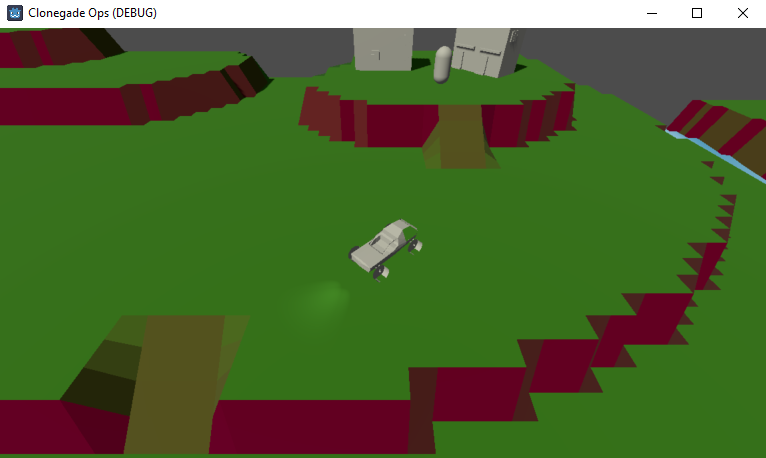
Tutorial Town
I looked at these two tutorials to help me get this far:
https://www.youtube.com/watch?v=xKO4WxzPQAI
https://www.youtube.com/watch?v=OvHNg4-Ueng
And here's the tutorial for the water shader:
https://www.youtube.com/watch?v=XjCh2cN3Mfg
I used the knowledge from the water shader to introduce a super garish grass texture with a base color combined with a noise texture in my terrain shader:
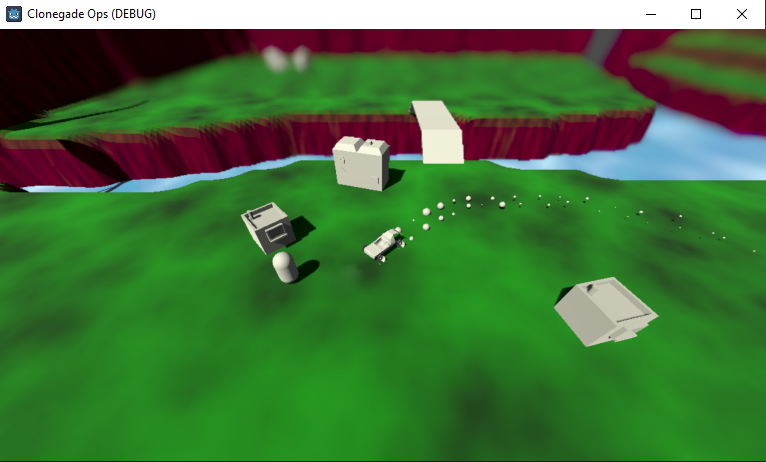
Here's also where I introduced modular buildings - you might not have ever realized that most buildings are randomized from a list of parts! They are selected at the start of a new game along with a random color. This was when the buildings were more central to the premise of the game, but I kept them in all the same.
Shaping Up
Now that the basics of the game was in place, I could start working on the logic of gameplay. At this point, I didn't have a firm idea of what I wanted the game to be - going back to Renegade Ops, I remember myself thinking "what if this game didn't have the tight time constraints that it does, and you could get quests from the villages around the map", so that's what I was kind of aiming for at this point.
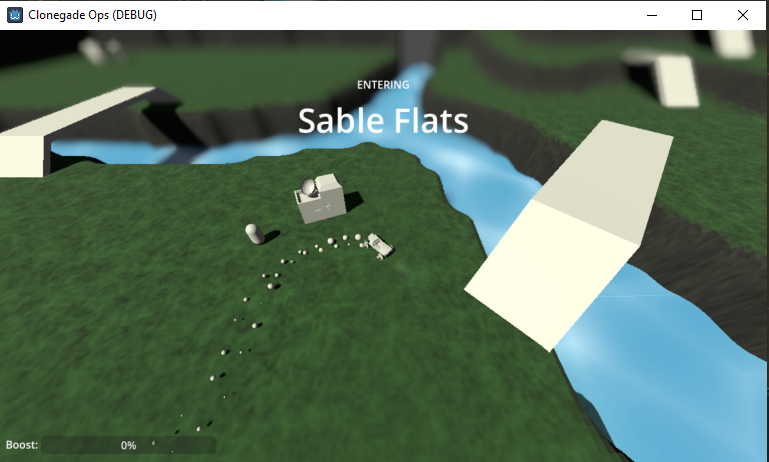
Obviously, that didn't pan out. I wanted to limit the scope of the game quite heavily to make sure that I had a chance to complete it. Starting out, delivery quests were supposed to be just one of many quest types, like "collect X items" or "kill X enemies" - deliveries were just the easiest to implement and test the quest generation system I had made. However, it dawned on me that if there were to be many other types of quests I would need to greatly expand the scope of both the map and the game logic, so for this small project I settled on making it a game purely about deliveries. Side note: I have since begun work on a new project with a bigger map and more logic which allows for multiple types of quests. More on that later!
Questing
As a test, I simply printed out the quests the player received in the Godot output terminal:

When I had that system up and running, it was time to implement UI elements so that the player could see their quest in-game. This was all well and good, but in order to have a better idea of where to go, I also implemented the quest arrow:
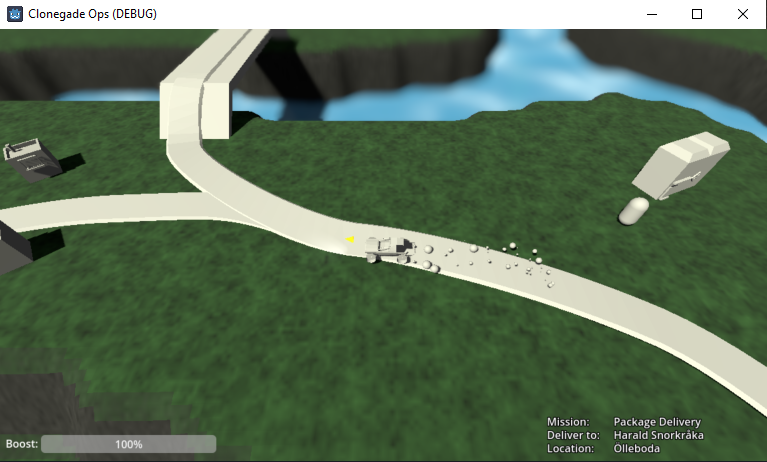
Map Features
Here's where I started to add features to the map that wasn't strictly geometric (the map exported as a single mesh in Blender). As of right now, roads don't have any impact on gameplay, but they serve to make the world a bit more cohesive as well as direct the player's attention. I want the roads to divert the player's attention away from the rest of the map where I can then put in shortcuts and secrets that you can find to optimize your routes between points.
I used the first part of this tutorial to lay down the road network through a number of paths: https://www.youtube.com/watch?v=Gfpnxg-jne4
I also spent some time decorating the outside of the play area so that you wouldn't see a blank void if you went right up against the edge:
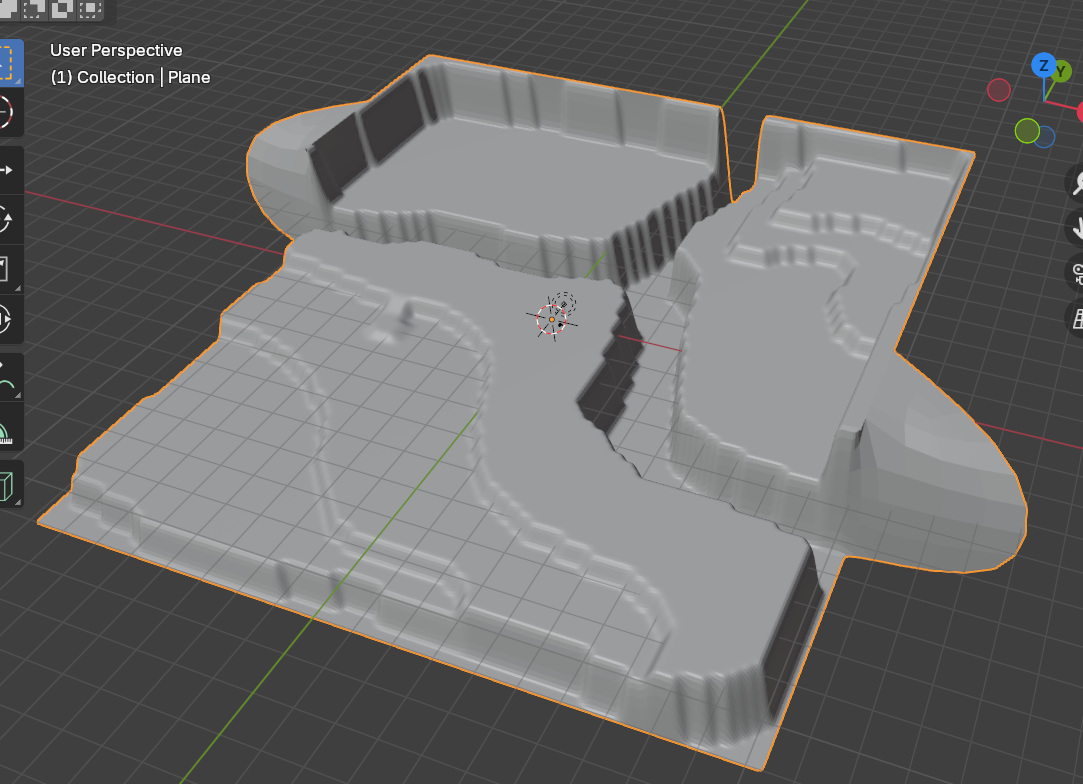
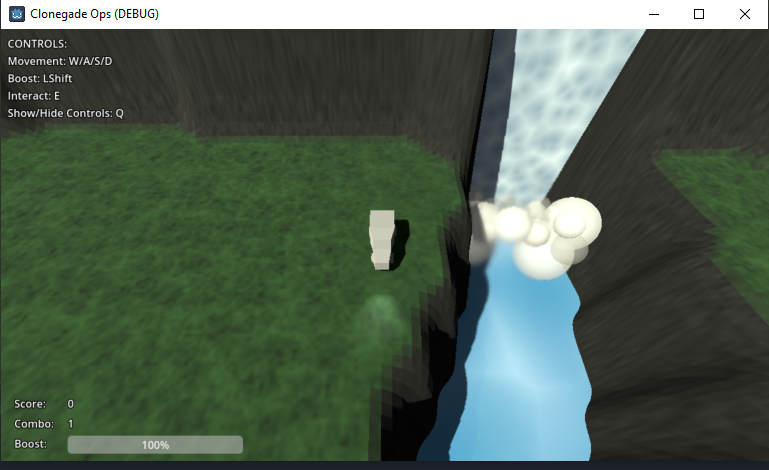
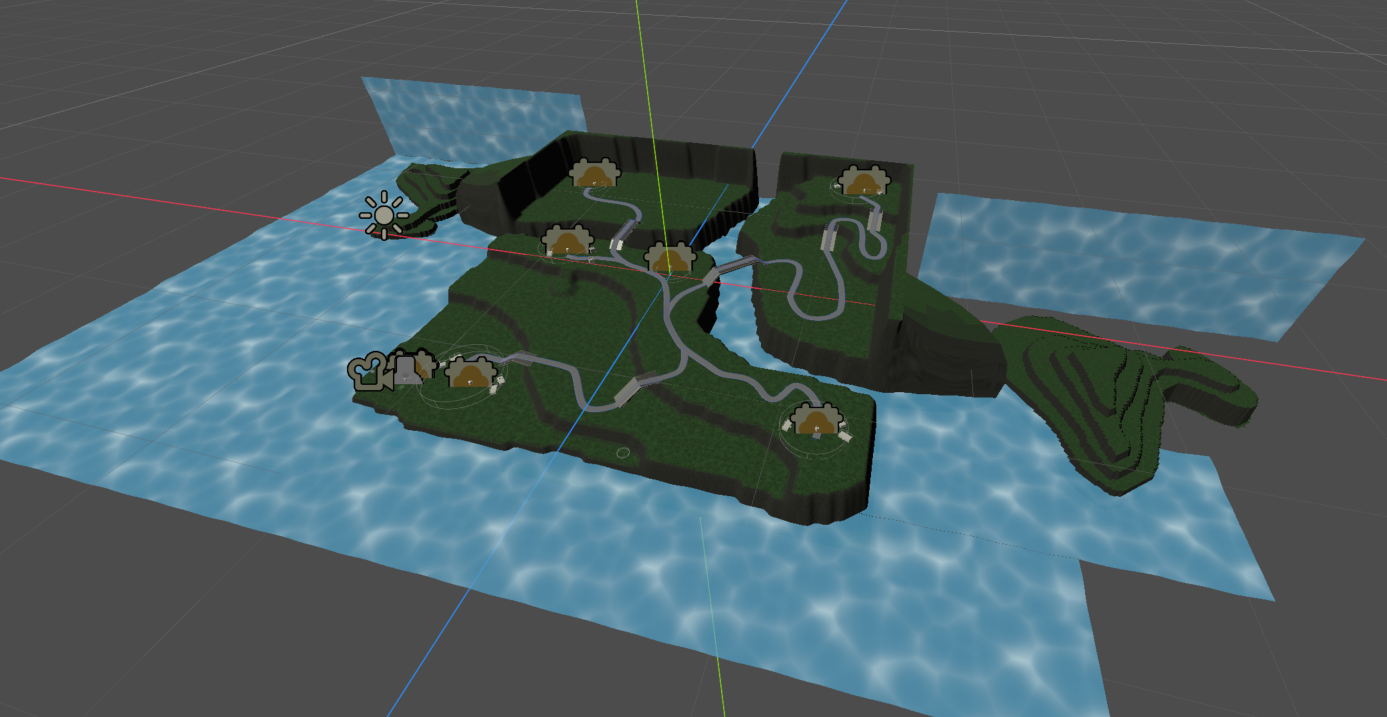
Here's also when I started adding the shrubbery to the level: at first, they were individual meshes with their individual collision shapes, but having too many of those crashed the web build of the game - it would only render the UI. I tried solving it and removing parts of shrubbery regions at a time and pushing new builds, but that turned into a load of work for practically no gain. That's when I decided to use large shrubbery areas with a single collision shape that slows you down rather than bumping into a lot of tiny collision shapes and having to navigate a mini maze every time you end up in the shrubs.

This approach killed two birds with one stone: I got rid of hundreds of individual meshes for one large one (like the terrain, the shrubbery is exported from Blender as a single mesh with collisions shapes added manually in Godot) and it improved the gameplay.
Adding Some Character
Up until this point, all the NPCs in the game were represented by capsules standing around. This would still be the case for some time, but I wanted to add some character to them, so I implemented the flavor text that can be seen when accepting a mission:
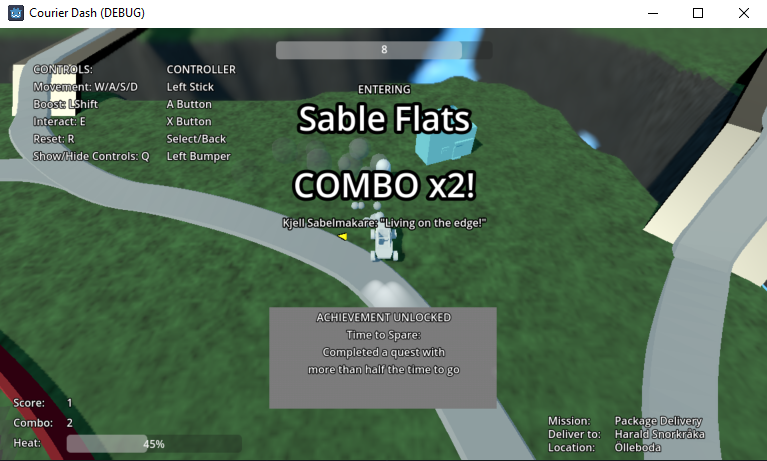
This, combined with the Super Duper Very Final character sprite is how the characters are looking as of right now. I'm looking into commissioning a friend of mine to draw sprites for the characters, so we'll see where we land on that!
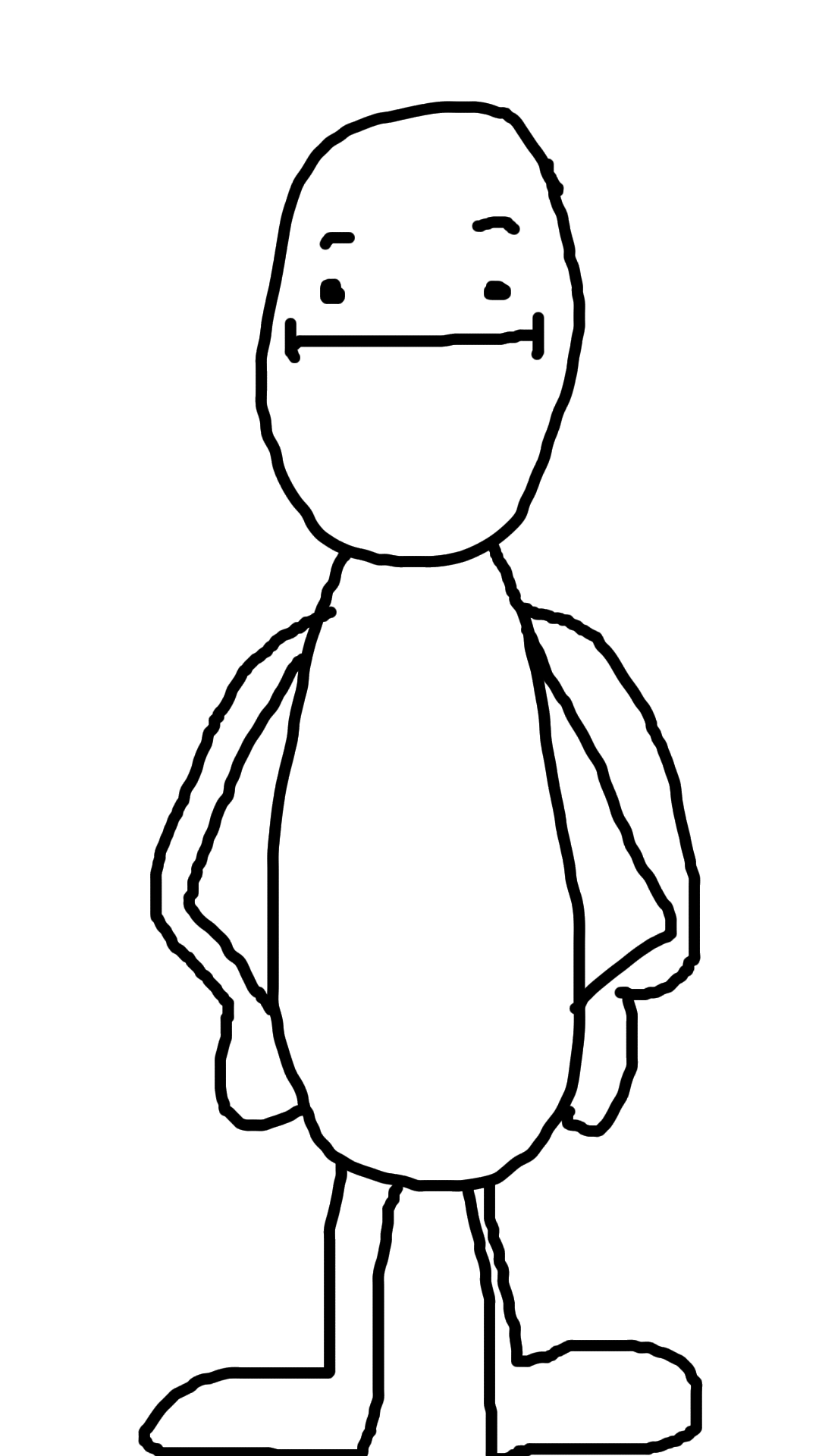
Maybe gone some day, never forgotten
Where We Are At
So that is a rundown of where we came from to where we are at right now. I feel like the game is pretty much feature complete - I don't want to add more gameplay or new systems. Just like my previous project I mainly want this to be a learning experience and a way for me to get to grips with making a game in 3D. By that metric, the project is a big success - I have learned a lot (my search history for "godot [thing I need]" is probably as long as this post), and I already have a rough plan for my next one or two projects that build on the things I've learned here and what I'll need to learn to complete my next project.
Where We Are Going
Next up is making a menu for the game, adding settings for volume control and I'm thinking about difficulty modes, all the way from a super tight deadline to having no time pressure at all. My development "philosophy" has been a bit all over the place - I work on stuff as it comes up and I make decisions in the moment which I may end up paying for down the line. Perhaps the biggest takeaway from this is to come up with a more solid plan before I even start working. For my next project, I should set up a Trello board or something like that.
I'll keep working on the game, posting small patch notes as I go, and maybe once the project is done I'll make another longer writeup!
Get Courier Dash (WIP)
Courier Dash (WIP)
Complete deliveries in a tiny open world!
| Status | In development |
| Author | henke-makes |
| Genre | Racing, Action |
| Tags | Arcade, High Score, Score Attack, Top-Down |
| Languages | English |
More posts
- v0.718 days ago
- v0.7 (downloadable)8 days ago
- v0.649 days ago
- v0.6310 days ago
- Achievement Guide15 days ago
- v0.6215 days ago
- v0.6116 days ago
- v0.618 days ago
- v0.5222 days ago
Leave a comment
Log in with itch.io to leave a comment.